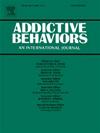浏览自闭症谱系障碍中有问题的社交媒体使用:社交焦虑的作用。
IF 3.7
2区 医学
Q1 PSYCHOLOGY, CLINICAL
引用次数: 0
摘要
上网是自闭症和非自闭症青少年最常见的业余活动之一。自闭症患者可能会从使用互联网中体验到交流的好处。然而,他们也可能有患上社交媒体使用问题(PSMU)的风险。迄今为止,自闭症青少年的PSMU仍未得到充分调查,也没有研究分析过情绪相关因素的作用。本研究旨在探讨自闭症被试与非自闭症被试在PSMU方面可能存在的差异,并探讨儿童和家长所报告的社交焦虑的两个维度(即羞辱/拒绝和表现焦虑)在PSMU水平恶化中的作用。共有183名参与者(76名自闭症患者)参加了这项研究,年龄在8-17岁之间。对社交媒体使用和社交焦虑进行问卷调查。此外,参与者的父母被要求完成一份与他们孩子的社交焦虑有关的问卷。结果显示,两组患者的PSMU水平相似。然而,与非自闭症青少年相比,自闭症青少年的PSMU与年龄和社交焦虑的两个维度之间存在不同的关系模式,这表明个体特征和特定的社交焦虑信念可能与理解自闭症的PSMU有关。这些发现的临床和预防意义进行了讨论。本文章由计算机程序翻译,如有差异,请以英文原文为准。
Browsing problematic social media use in autism spectrum disorder: The role of social anxiety
Accessing the Internet is one of the most frequent free-time activities among autistic and non-autistic adolescents. Autistic individuals may experience communicative benefits from using the Internet. However, they may also be at risk of developing Problematic Social Media Use (PSMU). To date, PSMU in autistic adolescents remains underinvestigated, and no research has analyzed the role of emotional correlates. The present study aims to investigate possible differences in terms of PSMU comparing autistic participants to their non-autistic peers, and examine the role of two dimensions of social anxiety (i.e., humiliation/refusal and performance anxiety) as reported by both children and parents in worsening the levels of PSMU. A total of 183 participants (76 on the autism spectrum), aged (8–17 years) participated in the study. Questionnaires on social media use and on social anxiety were administered. Moreover, parents of the participants were asked to complete a questionnaire related to their children’s social anxiety. Results showed similar levels of PSMU across the two groups. However, a different pattern of relationships between PSMU and age, and the two dimensions of social anxiety was observed in autistic adolescents as compared to the non-autistic peers, revealing that individual characteristics and specific social anxiety beliefs might be relevant to understanding PSMU in autism. The clinical and preventive implications of these findings are discussed.
求助全文
通过发布文献求助,成功后即可免费获取论文全文。
去求助
来源期刊

Addictive behaviors
医学-药物滥用
CiteScore
8.40
自引率
4.50%
发文量
283
审稿时长
46 days
期刊介绍:
Addictive Behaviors is an international peer-reviewed journal publishing high quality human research on addictive behaviors and disorders since 1975. The journal accepts submissions of full-length papers and short communications on substance-related addictions such as the abuse of alcohol, drugs and nicotine, and behavioral addictions involving gambling and technology. We primarily publish behavioral and psychosocial research but our articles span the fields of psychology, sociology, psychiatry, epidemiology, social policy, medicine, pharmacology and neuroscience. While theoretical orientations are diverse, the emphasis of the journal is primarily empirical. That is, sound experimental design combined with valid, reliable assessment and evaluation procedures are a requisite for acceptance. However, innovative and empirically oriented case studies that might encourage new lines of inquiry are accepted as well. Studies that clearly contribute to current knowledge of etiology, prevention, social policy or treatment are given priority. Scholarly commentaries on topical issues, systematic reviews, and mini reviews are encouraged. We especially welcome multimedia papers that incorporate video or audio components to better display methodology or findings.
Studies can also be submitted to Addictive Behaviors? companion title, the open access journal Addictive Behaviors Reports, which has a particular interest in ''non-traditional'', innovative and empirically-oriented research such as negative/null data papers, replication studies, case reports on novel treatments, and cross-cultural research.
 求助内容:
求助内容: 应助结果提醒方式:
应助结果提醒方式:


